Planning worship?
Check out our sister site, ZeteoSearch.org,
for 20+ additional resources related to your search.
- |
User Links
Person Results
‹ Return to hymnal
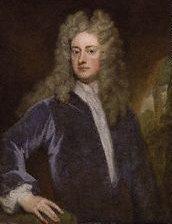
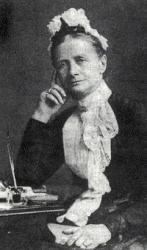
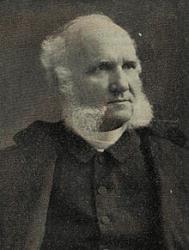
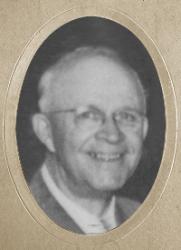
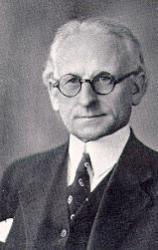
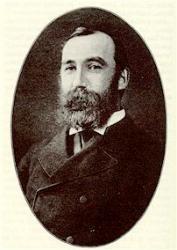
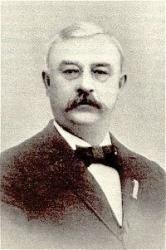
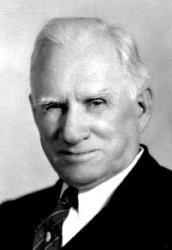


Export as CSV
Joseph Addison

1672 - 1719 Hymnal Number: 38 Author of "When All Thy Mercies, O My God" in Hymns for the Living Church Addison, Joseph, born at Milston, near Amesbury, Wiltshire, May 1, 1672, was the son of the Rev. Lancelot Addison, sometime Dean of Lichfield, and author of Devotional Poems, &c, 1699. Addison was educated at the Charterhouse, and at Magdalen College, Oxford, graduating B.A. 1691 and M.A. 1693. Although intended for the Church, he gave himself to the study of law and politics, and soon attained, through powerful influence, to some important posts. He was successively a Commissioner of Appeals, an Under Secretary of State, Secretary to the Lord Lieutenant of Ireland, and Chief Secretary for Ireland. He married, in 1716, the Dowager Countess of Warwick, and died at Holland House, Kensington, June 17, 1719. Addison is most widely known through his contributions to The Spectator, The Toiler, The Guardian, and The Freeholder. To the first of these he contributed his hymns. His Cato, a tragedy, is well known and highly esteemed. Addison's claims to the authorship of the hymns usually ascribed to him, or to certain of them, have been called in question on two occasions. The first was the publication, by Captain Thompson, of certain of those hymns in his edition of the Works of Andrew Marvell, 1776, as the undoubted compositions of Marvell; and the second, a claim in the Athenaeum, July 10th, 1880, on behalf of the Rev. Richard Richmond. Fully to elucidate the subject it will be necessary, therefore, to give a chronological history of the hymns as they appeared in the Spectator from time to time.
i. The History of the Hymns in The Spectator. This, as furnished in successive numbers of the Spectator is :—
1. The first of these hymns appeared in the Spectator of Saturday, July 26, 1712, No. 441, in 4 stanzas of 6 lines. The article in which it appeared was on Divine Providence, signed “C." The hymn itself, "The Lord my pasture shall prepare," was introduced with these words:—
"David has very beautifully represented this steady reliance on God Almighty in his twenty-third psalm, which is a kind of pastoral hymn, and filled with those allusions which are usual in that kind of writing As the poetry is very exquisite, I shall present my readers with the following translation of it." (Orig. Broadsheet, Brit. Mus.)
2. The second hymn appeared in the Spectator on Saturday, Aug. 9, 1712, No. 453, in 13 st. of 4 1., and forms the conclusion of an essay on " Gratitude." It is also signed " C," and is thus introduced:—
“I have already obliged the public with some pieces of divine poetry which have fallen into my hands, and as they have met with the reception which they deserve, I shall, from time to time, communicate any work of the same nature which has not appeared in print, and may be acceptable to my readers." (Orig. Broadsheet, British Museum)
Then follows the hymn:—"When all Thy mercies, 0 my God."
3. The number of the Spectator for Tuesday, Aug. 19, 1712, No. 461, is composed of three parts. The first is an introductory paragraph by Addison, the second, an unsigned letter from Isaac Watts, together with a rendering by him of Ps. 114th; and the third, a letter from Steele. It is with the first two we have to deal. The opening paragraph by Addison is:—
“For want of time to substitute something else in the Boom of them, I am at present obliged to publish Compliments above my Desert in the following Letters. It is no small Satisfaction, to have given Occasion to ingenious Men to employ their Thoughts upon sacred Subjects from the Approbation of such Pieces of Poetry as they have seen in my Saturday's papers. I shall never publish Verse on that Day but what is written by the same Hand; yet shall I not accompany those Writings with Eulogiums, but leave them to speak for themselves." (Orig. Broadsheet, British Museum
Joseph Addison
Cecil Frances Alexander

1818 - 1895 Person Name: Cecil F. Alexander Hymnal Number: 53 Author of "All Things Bright and Beautiful" in Hymns for the Living Church As a small girl, Cecil Frances Humphries (b. Redcross, County Wicklow, Ireland, 1818; Londonderry, Ireland, 1895) wrote poetry in her school's journal. In 1850 she married Rev. William Alexander, who later became the Anglican primate (chief bishop) of Ireland. She showed her concern for disadvantaged people by traveling many miles each day to visit the sick and the poor, providing food, warm clothes, and medical supplies. She and her sister also founded a school for the deaf. Alexander was strongly influenced by the Oxford Movement and by John Keble's Christian Year. Her first book of poetry, Verses for Seasons, was a "Christian Year" for children. She wrote hymns based on the Apostles' Creed, baptism, the Lord's Supper, the Ten Commandments, and prayer, writing in simple language for children. Her more than four hundred hymn texts were published in Verses from the Holy Scripture (1846), Hymns for Little Children (1848), and Hymns Descriptive and Devotional ( 1858).
Bert Polman
==================
Alexander, Cecil Frances, née Humphreys, second daughter of the late Major John Humphreys, Miltown House, co. Tyrone, Ireland, b. 1823, and married in 1850 to the Rt. Rev. W. Alexander, D.D., Bishop of Derry and Raphoe. Mrs. Alexander's hymns and poems number nearly 400. They are mostly for children, and were published in her Verses for Holy Seasons, with Preface by Dr. Hook, 1846; Poems on Subjects in the Old Testament, pt. i. 1854, pt. ii. 1857; Narrative Hymns for Village Schools, 1853; Hymns for Little Children, 1848; Hymns Descriptive and Devotional, 1858; The Legend of the Golden Prayers 1859; Moral Songs, N.B.; The Lord of the Forest and his Vassals, an Allegory, &c.; or contributed to the Lyra Anglicana, the S.P.C.K. Psalms and Hymns, Hymns Ancient & Modern, and other collections. Some of the narrative hymns are rather heavy, and not a few of the descriptive are dull, but a large number remain which have won their way to the hearts of the young, and found a home there. Such hymns as "In Nazareth in olden time," "All things bright and beautiful," "Once in Royal David's city," "There is a green hill far away," "Jesus calls us o'er the tumult," "The roseate hues of early dawn," and others that might be named, are deservedly popular and are in most extensive use. Mrs. Alexander has also written hymns of a more elaborate character; but it is as a writer for children that she has excelled.
- John Julian, Dictionary of Hymnology (1907)
===============
Alexander, Cecil F., née Humphreys, p. 38, ii. Additional hymns to those already noted in this Dictionary are in common use:—
1. Christ has ascended up again. (1853.) Ascension.
2. His are the thousand sparkling rills. (1875.) Seven Words on the Cross (Fifth Word).
3. How good is the Almighty God. (1S48.) God, the Father.
4. In [a] the rich man's garden. (1853.) Easter Eve.
5. It was early in the morning. (1853.) Easter Day.
6. So be it, Lord; the prayers are prayed. (1848.) Trust in God.
7. Saw you never in the twilight? (1853.) Epiphany.
8. Still bright and blue doth Jordan flow. (1853.) Baptism of Our Lord.
9. The angels stand around Thy throne. (1848.) Submission to the Will of God.
10. The saints of God are holy men. (1848.) Communion of Saints.
11. There is one Way and only one. (1875.) SS. Philip and James.
12. Up in heaven, up in heaven. (1848.) Ascension.
13. We are little Christian children. (1848.) Holy Trinity.
14. We were washed in holy water. (1848.) Holy Baptism.
15. When of old the Jewish mothers. (1853.) Christ's Invitation to Children.
16. Within the Churchyard side by side. (1848.) Burial.
Of the above hymns those dated 1848 are from Mrs. Alexander's Hymns for Little Children; those dated 1853, from Narrative Hymns, and those dated 1875 from the 1875 edition of Hymns Ancient & Modern.
Several new hymns by Mrs. Alexander are included in the 1891 Draft Appendix to the Irish Church Hymnal.
--John Julian, Dictionary of Hymnology, Appendix, Part II (1907)
=============
Alexander, Cecil F. , p. 38, ii. Mrs. Alexander died at Londonderry, Oct. 12, 1895. A number of her later hymns are in her Poems, 1896, which were edited by Archbishop Alexander.
--John Julian, Dictionary of Hymnology, New Supplement (1907)
See also in:Hymn Writers of the Church
Cecil Frances Alexander
Joseph A. Seiss

1823 - 1904 Hymnal Number: 67 Translator st. 4 of "Fairest Lord Jesus" in Hymns for the Living Church Joseph A. Seiss was born and raised in a Moravian home with the original family name of Seuss. After studying at Pennsylvania College in Gettysburg and completing his theological education with tutors and through private study, Seiss became a Lutheran pastor in 1842. He served several Lutheran congregations in Virginia and Maryland and then became pastor of St. John's Lutheran Church (1858-1874) and the Church of the Holy Communion (1874-1904), both in Philadelphia. Known as an eloquent and popular preacher, Seiss was also a prolific author and editor of some eighty volumes, which include The Last Times (1856), The Evangelical Psalmist (1859), Ecclesia Lutherana (1868), Lectures on the Gospels (1868-1872), and Lectures on the Epistles (1885). He contributed to and compiled several hymnals.
Bert Polman
Joseph A. Seiss
A. H. Ackley

1887 - 1960 Person Name: Alfred H. Ackley Hymnal Number: 158 Author of "I Serve a Risen Savior" in Hymns for the Living Church Alfred Henry Ackley was born 21 January 1887 in Spring Hill, Pennsylvania. He was the youngest son of Stanley Frank Ackley and the younger brother of B. D. Ackley. His father taught him music and he also studied at the Royal Academy of Music in London. He graduated from Westminster Theological Seminary in Maryland and was ordained as a Presbyterian minister in 1914. He served churches in Pennsylvania and California. He also worked with the Billy Sunday and Homer Rodeheaver evangelist team and for Homer Rodeheaver's publishing company. He wrote around 1500 hymns. He died 3 July 1960 in Los Angeles.
Dianne Shapiro (from ackleygenealogy.com by Ed Ackley and Allen C. Ackley)
A. H. Ackley
George Bennard

1873 - 1958 Hymnal Number: 236 Author of "On a Hill Far Away" in Hymns for the Living Church George Bennard (1873-1958) was born in Youngstown, OH. When he was a child the family moved to Albia, Iowa. He served with the Salvation Army in Iowa for several years before he was ordained in the Methodist Episcopal Church. His hymn "Speak, my Lord" appears in Triumphant Service Songs (Chicago: Rodeheaver Hall-Mack Co., 1934). He wrote words and tune for his best known hymn "The Old Rugged Cross" in 1913.
Mary Louise VanDyke
George Bennard
D. W. Whittle

1840 - 1901 Person Name: Daniel W. Whittle Hymnal Number: 249 Author of "There Shall Be Showers of Blessing" in Hymns for the Living Church [Also published under the pseudonym El Nathan.]
===============
Whittle, D. W.. Six of his hymns (Nos. 295, 308,363, 385, 386, 417) are given in I. D. Sankey's Sacred Songs and Solos, under the signature of "El Nathan."
--John Julian, Dictionary of Hymnology, Appendix, Part II (1907)
D. W. Whittle
W. A. Ogden

1841 - 1897 Person Name: William A. Ogden Hymnal Number: 265 Author of "I've a Message from the Lord" in Hymns for the Living Church William Augustine Ogden USA 1841-1897. Born at Franklin County, OH, his family moved to IN when he was age six. He studied music in local singing schools at age 8, and by age 10 could read church music fairly well. Later, he could write out a melody by hearing it sung or played. He enlisted in the American Civil War in the 30th IN Volunteer Infantry. During the war he organized a male choir which became well known throughout the Army of the Cumberland. After the war, he returned home, resumed music study, and taught school. He married Jennie V Headington, and they had two children: Lowell and Marian. He worked for the Iowa Normal School, Toledo Public School System. Among his teachers: Lowell Mason, Thomas Hastings, E E Baily and B F Baker, president of the Boston Music School. He wrote many hymns, both lyrics and/or music. He later issued his first song book, “The silver song” (1870). It became quite popular, selling 500,000 copies. He went on to publish other song books. Ogden also taught music at many schools in the U S and Canada. In 1887 he became superintendent of music in the public schools of Toledo, OH. His works include: “New silver songs for Sunday school” (1872), “Crown of life” (1875), “Notes of victory” (1885), “The way of life” (1886), “Gathering jewels” (1886). He was known as a very enthusiastic person in his work and a very congenial one as well. He died at Toledo, OH.
John Perry
W. A. Ogden
William R. Newell

1868 - 1956 Hymnal Number: 286 Author of "Years I Spent in Vanity and Pride" in Hymns for the Living Church William Newell (1868-1956) was born in Savannah, OH. He earned degrees from Wooster College, Princeton and Oberlin Theological Seminary. He served as Assistant Superintendent of the Moody Bible Institute, Chicago. The words for his hymn "At Calvary" came to him on his way to teach a class at the Bible Institute. He slipped into an empty classroom and wrote them quickly on the back of an envelope. (see bio in 101 More Hymn Stories, Osbeck, Grand Rapids, MI: Kregel, 1985.)
Mary Louise VanDyke
William R. Newell
Frederick Whitfield

1829 - 1904 Hymnal Number: 304 Author of "There Is a Name I Love to Hear" in Hymns for the Living Church Whitfield, Frederick, B.A., son of H. Whitfield, was born at Threapwood, Shropshire, Jan. 7, 1829, and educated at Trinity College, Dublin, where he took his B.A. in 1859. On taking Holy Orders, he was successively curate of Otley, vicar of Kirby-Ravensworth, senior curate of Greenwich, and Vicar of Stanza John's, Bexley. In 1875 he was preferred to St. Mary's, Hastings. Mr. Whitfield's works in prose and verse number upwards of thirty, including Spiritual unfolding from the Word of Life; Voices from the Valley Testifying of Jesus; The Word Unveiled; Gleanings from Scripture, &c. Several of his hymns appeared in his Sacred Poems and Prose, 1861, 2nd Series, 1864; The Casket, and Quiet Hours in the Sanctuary. The hymn by which he is most widely known is I need Thee, precious Jesu.” Other hymns by him in common use include:~
1. I have a Great High Priest above. Christ the High Priest.
2. I saw the Cross of Jesus. The Cross.
3. In spirit, Lord, we meet Thee now. Missions. This was written at the request of the Committee of the Irish Church Missions for one of their annual meetings in London.
4. Jesus, Thou Name of magic power. The Name of Jesus. Sometimes given as "Jesus, Thou Name of power divine."
5. The sprinkled blood is speaking. The Blood of Christ.
6. There is a day I long to see. Heaven Anticipated.
7. There is a Name I love to hear. The Name of Jesus. Published in 1855 in hymnsheets and leaflets in various languages. From this the hymn “Jesus, the Name I love so well" is taken.
8. There's naught on earth to rest upon. God Unchangeable.
9. When dead in sin and far from God. Redemption.
All these hymns, with the exception of No. 3, are in his Sacred Poems and Prose, 1861, and several of them have been printed as leaflets, and set to special music. The Sacred Poems, &c, contains 26 hymns, some of which are of considerable merit.
-- John Julian, Dictionary of Hymnology (1907)
Frederick Whitfield
Cleland Boyd McAfee

1866 - 1944 Person Name: Cleland B. McAfee Hymnal Number: 342 Author of "There Is a Place of Quiet Rest" in Hymns for the Living Church Cleland Boyd McAfee (September 25, 1866 – February 4, 1944) was an American theologian, Presbyterian minister and hymn writer, best known for penning the gospel hymn, "Near to the Heart of God," and its tune called "McAfee". He wrote the song after the concurrent deaths of two of his young nieces, caused by diphtheria.
McAfee was born in Ashley Missouri, in 1866, as one of five children. His father, John A. McAfee, was the founder of Park College in Parkville, Missouri. The younger McAfee graduated from Park College in 1884, and later graduated from Union Theological Seminary in New York. McAfee went on to serve as a professor of philosophy, choir director, pastor and dean of Park College until 1901, when he left to minister at the First Presbyterian Church of Chicago. McAfee moved from First Presbyterian in 1904, to pastor the Lafayette Avenue Church of Brooklyn, in Brooklyn, New York. McAfee also taught systematic theology at McCormick Theological Seminary, from 1912 to 1930.
In 1912, McAfee authored the treatise, "The Greatest English Classic: A Study Of The King James Version Of The Bible." He was moderator of the General Assembly of Presbyterian Church in the United States, and led the Presbyterian Board of Foreign Missions from 1930 to 1936. He died in 1944.
On August 10, 1892, McAfee married Harriet "Hattie" Lawson Brown; they had three children, Ruth Myrtle, Katharine Agnes, and Mildred Helen. Mildred Helen McAfee Horton went on to become the first director of WAVES (Women Accepted for Volunteer Emergency Service) in the United States Navy.
--en.wikipedia.org/wiki/Cleland_Boyd_McAfee
Cleland Boyd McAfee


 My Starred Hymns
My Starred Hymns

